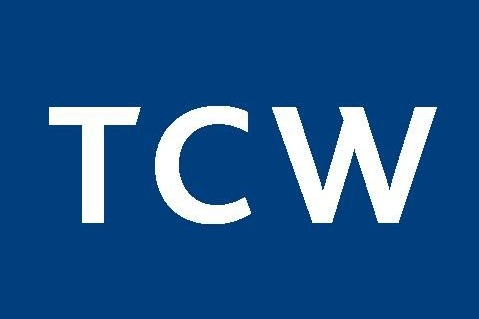-
KOSPI 2577.27 -2.21 -0.09%
-
KOSDAQ 722.52 -7.07 -0.97%
-
KOSPI200 341.49 +0.02 +0.01%
-
USD/KRW 1396 -2.00 0.14%
US non-agency mortgage-backed securities to shine in 2023: TCW
The market is mispriced but has good fundamentals; debts issued by banks are also low-priced and attract aggressive investments
Dec 22, 2022 (Gmt+09:00)

Amid the tightening of the Federal Reserve, among the most impacted asset classes were agency mortgage-backed securities (MBS), issued by US government-sponsored entities. The assets underperformed the US Treasuries over the past two years and thus the Fed reduced its exposure to mortgages.
One of the most mispriced sectors today is non-agency MBS, said Stephen Kane, co-chief investment officer and a generalist portfolio manager of fixed income at US asset management firm TCW Group Inc. The market for the assets is fundamentally sound, and a number of liquidating for the past few months has pushed spreads 100 to 300 basis points wider in various market areas, Kane says. This may be impacted by the recession but also will come out in good shape, he added.
In the next six months, investors could find mispricing in debts issued by banks, said Bryan Whalen, co-chief investment officer and a generalist portfolio manager of fixed income at TCW. The debts increased from one-third to almost half of the investment-grade corporate bond issuance this year, very low-priced. This is an area into which TCW has moved aggressively, said Whalen.
The following is a conversation between Kane and Whalen on the economic outlook and investment opportunities for next year.
▲ Could you discuss your views on the landscape we've experienced this year, how you've thought about fixed income, what's been happening in the markets and what have been the drivers of market volatility thus far?
Kane: The obvious statement is that the landscape has been very ugly. In fact, it has been historically ugly. This is the worst fixed-income market on record going back to the mid-seventies with the start of the Barclays Aggregate index, with fixed-income returns this year in negative double-digit territory.
The main driver has been a significant upside surprise to inflation that was really an output from the pandemic and, more specifically, very aggressive monetary and fiscal policy responses to the pandemic that pumped trillions of dollars of money into the economy. At the same time, the economy was supply constrained, initially by the pandemic itself with lockdowns. And then this year, the war and international trade have been influenced by that as well.
So, as a result of that, central banks were a little late to recognize the inflation, but have since acted very aggressively with the Fed moving nearly 4% in eight months. And other major central banks around the world – Reserve Bank of Australia, Bank of Canada, Bank of England, ECB, and other central banks – moving not quite as much as the Fed, but similarly. This has created a very volatile environment for fixed income.
And I think when you look at the size of the tightening, the breadth of it across the globe, as well how quickly it's happened, this has really been an unprecedented period of monetary policy tightening, and it's led to significant volatility and negative returns in fixed income.
So what have we been doing? We have been applying our value discipline and came into the year defensive on rates. We started the year below 1% at the front end of rates, and were defensive of over half a year on duration and have gradually added duration, getting to neutral about mid-year, and today we're actually over a half year long in terms of duration. So we're viewing the rate market as increasingly attractive and constructive in that area.
Similarly on credit risk, we started the year with very tight credit spreads under 100 basis points. We were defensive, under benchmark in terms of exposure. Again, using our value disciplines, we've added exposure, and similar to duration or slightly longer benchmarks on credit risk today.
Whalen: The only thing I might add is to emphasize that these tightenings have been synchronized, but not just synchronized from a rate perspective, meaning global central banks raising interest rates. It's also quantitative tightening, which is a bigger unknown.
We have multiple central banks across the globe now moving the other way with regard to their balance sheet. They're taking reserves out of the banking system. They're pulling liquidity out of the capital markets.
I think central banks don't have a good idea in terms of how much to tighten and the lagged impact of that. They really don't have an idea of what happens when they shrink their balance sheets. So that's an additional aspect that makes this tightening cycle not just globally synchronized, but also unique due to quantitative tightening.
▲ As you mentioned, rates have been high with the Fed and other central banks raising rates this year. But we haven't yet seen a huge impact on unemployment or economic growth. What is the prospect of future rate hikes?
Kane: I think we'd start by humbly saying that it's very difficult to predict. We don't attempt to call the tops and bottoms of markets or beginnings and ends of cycles. Having said that, I’d observe a few things that might suggest we are towards the end of the cycle and potentially heading towards a recession.
The first is that you're not surprisingly seeing interest rate-sensitive sectors begin to react to higher interest rates. Housing, autos, and consumer durables have been very weak in recent months. And that suggests that interest rate policy is beginning to impact those sectors of the economy.
What we're hearing from our credit research area, as well as what we're hearing from the corporate sector, is a lot of caution and a lot of concern. We’re seeing downward revisions to forward guidance, cutting capital expenditures, and some cutbacks in hiring. It hasn't shown up at the macro level, but you're seeing a lot of layoffs and freezing of hiring in tech. Amazon, Target, and other areas of the corporate sector are showing some weaknesses.
Consumer spending has been strong. However, in our opinion, that's really been since there was a large accumulation of savings. It's been worked through to this point, and we're beginning to see, particularly the lower income levels, the stress in the consumer sector. This shows up in some shifting preferences and also some pullback of spending. So we're starting to see the beginning of a downturn in the consumer sector.
Finally, we’d point to the recent prints on CPI and PPI that came off the recent highs. We think we have probably seen the peak of inflation. It’s probably not enough to get the Fed completely comfortable because we're still at relatively high levels, but when you combine all these things – signs of slowing and a rolling over of peak inflation – and it's probably enough to give the Fed comfort to hike a few more times, maybe get the Fed funds rate up into the high fours or low fives, and then pause for a while.

▲All those things such as a slowdown and unemployment sound a lot like a recession. What are the odds of recession in 2023?
Whalen: Let's say 'likely.' There might have been a point in this tightening cycle earlier this year where that unicorn may have been achieved, which is the soft landing that all central banks try to do, but rarely actually accomplish.
In the first half of the year, maybe if the capital markets and equity markets reacted maybe a little more negatively to the beginning of this cycling cycle, you would've had a negative wealth effect that might have translated through to consumer demand and would have brought down inflation a little sooner and maybe at a quicker pace, but it doesn't seem to have been the case.
Equities are down, but not enough to really dent consumer demand. So it sounds like the Fed is going to have to do it the old-fashioned way, which is the hard way, which is to drive us probably into a recession with the mindset that will push up unemployment, and thus pull down on consumer demand, which will finally bring down inflation. And again, while it's not certain, that is probably the most likely path.
Kane: I would add just one point there. And you know, there's a lot of debate whether it's going to be a soft landing, or a deep recession, or a long recession. It's impossible to forecast the contours. We would make one observation though, which is that we're unlikely to see a GFC-like crash or even a pandemic-like seizing up of liquidity in the financial system.
This is in part because our view is that the banking system is sound and liquid and well capitalized from an asset quality standpoint, so is in really good shape. So we think it will be a more normal recession from that standpoint.
▲ What are you expecting from a credit market standpoint? If we do enter a recession to slow down demand, what does that mean for the credit market?
Whalen: When you hear recession and you’re thinking about corporates, you think about defaults. You would expect to see companies having a hard time paying their debts and that should be expected.
We've been through a period where default rates in the high-yield bond market and the leveraged loan market have been at historical lows, well below 1%, and they've been there for a while. And so it's natural to expect with a slowdown in the economy, we're going to see defaults rise.
And if you see defaults rise, the bond market and the capital markets will start talking about losses in these portfolios and that should translate to wider spreads and lower dollar prices. That should be expected.
On the other side though, maybe unlike the last time we were thinking that we were near the end of the cycle, which was 2019, balance sheets don't look as leveraged. And one of the few upsides of inflation is that it solves a nominal problem, which is debt.
When you look at the leveraged loan market, or when you look at the high yield bond market and you look at either leverage metrics – debt to earnings or debt to EBITDA – those corporations don't look all that levered and that vulnerable.
It kind of looks near historical averages. And then if you think about their ability to cover their interest costs, that looks not just fair, it looks actually very healthy. And that's a result of being in such a low-interest rate environment for such a low period of time.
Most of the coupons that these borrowers, these corporations have to pay are quite low and so if we do enter recession, we'll see defaults pick up, and we'll have a conversation about losses, but that should be relatively mitigated by the low absolute levels of debt and the high levels of interest coverage.
▲ Steve, you mentioned at the beginning a little bit about how you’ve repositioned portfolios. I know you started the year fairly defensive – underweight credit, short duration – but those have changed. Could you give some color on the evolution of your portfolio positioning over the last 10 months?
Kane: We do expect fundamental stress to occur in certain areas of the credit markets, such as high-yield bank loans and emerging markets to some degree, but there are certain areas of investment grade market where you're getting well paid for that recessionary risk.
The first sector I’d highlight is the sector most directly impacted by the Fed tightening which is agency mortgage-backed securities. They have underperformed Treasuries both in 2021 and this year by sizable amounts. Spreads are at near record levels in that area, and it's due to a variety of factors.
Clearly, increasing interest rates have made these mortgages extend, and the Fed reducing their exposure to mortgages by letting them wind down on the balance sheet has been a headwind.
But the way we look at it from a long-term value perspective is: you have very wide spreads, you have very high quality – effectively a government guarantee – and you have low average dollar price given the rate rise, which means you have less negative convexity or really positive convexity in the agency mortgage market.
So we have made a significant shift in the direction of getting more overweight, and our biggest overweight today is the agency mortgage sector. We also think it has the benefit of having good liquidity and therefore gives us flexibility for portfolio adjustments as other opportunities occur.
Investment grade corporates today look fair overall. Our overweight really comes from the bottom-up assessment of opportunities in non-cyclical regulated areas of the market. Money-center banks are one, I'd highlight.
And finally, I would say the area that probably is the most mispriced, and quietly so – it's not something you read much about – is the non-agency mortgage-backed securities market. And we think this market is fundamentally sound. Underwriting has been good in the post-global financial crisis era, we've had home price appreciation, and we've seen conservative securitization activity.
At the same time, we've seen quite liquidating activity going on, particularly in the last two or three months. That has pushed spreads 100 to 300 basis points wider in various areas of the market. And this is an area of the market we think will be impacted by the recession, but should come out in very good shape. So we really like the non-agency mortgage.
▲ Do you see any other parts of the market where you’re seeing mispricing or good opportunities? Are there opportunities that you expect to see over the next six months or so?
Whalen: The first place of dislocation was actually in the highest quality, most liquid parts of the market. And within that framework, we see banks underperformed significantly. Banks have been highly regulated, and due to those regulations, they've had to issue a tremendous amount of debt. But that has served two purposes. And it works both ways for the bondholders in terms of a positive way.
One, it de-risks them and makes them stronger to enter a recession by making their balance sheets stronger and putting them in a better liquidity position. That helps you as a bond investor, but also because this year has been relatively unique and somewhat difficult from a liquidity perspective and they've had to issue so much debt in this environment, it has come very cheap.
Historically, banks are about a third of investment-grade corporate bond issuance. This year, they've been closer to a half. When you issue that much debt as a percentage of the market in a year like this, the result is and you have to issue debt quite cheaply. So that's an area of the market where we've moved into fairly aggressively. We think over the long term, as all value investors do, those spreads will remediate.
Kane: I’ll talk about some of the areas of the market we’re cautious on where we think we'll get some opportunity. We've mentioned high yield and emerging markets as defaults get priced in there, but we haven't yet talked about commercial mortgage-backed securities. That's an area where our allocations are low – they’re high quality and very targeted in the SASB (single asset, single borrower) market.
It's where we see the early signs of stress given the shifting demand for commercial real estate office and downtown office properties. It depends on geography, of course, but you're seeing stress build in that area. And we think that this is going to be a cycle where you're going to see commercial property-related defaults. So we're staying cautious, but we think we're going to have some opportunity in 2023.
▲ You hear all the time about liquidity being challenging and having gotten worse over the years. Any comments on general market liquidity or sectors that are particularly challenged from that standpoint these days?
Whalen: Liquidity has been okay. There's been enough liquidity to manage your portfolio and reconstruct and move into areas you want to get into and out of areas you want to be defensive in. That's been a good thing.
But the reality is that post-GFC, post-Dodd-Frank, post-Basel regulations, the capital market infrastructure is very, very different, meaning that when volatility picks up, broker-dealers tend to step back from the marketplace, it leaves institutional investors and retail investors managing with an asset class – from a size perspective – at all-time highs. It presents a challenge to move those assets around.
We recommend to everyone that you have to incorporate liquidity into the portfolio construction process. You have to think about it in terms of how you're going to trade these asset classes. You have to think about it in terms of the pace at which you add assets or recognize you may not be able to get out as quickly as you once did. And that's okay because it also means there are opportunities. It means you can get paid to be the liquidity provider.
We would just, again, recommend that everyone incorporate that into their process. It's not just about the fundamentals; it's about the way you can move within these asset classes and the way you can move in and out of them.
▲ Any other concluding thoughts about what you’re seeing in markets today?
Kane: I'm going to cheer for the asset class for a moment. That is to say, it's been a rough market from a return standpoint. We've seen a big increase in yields. We're not ready to call the top in yields or the bottom in fixed-income returns.
However, what we'll say is that 4.5-5.5% yields on investment grade fixed income is the highest we've seen in over 10 years. We think it's a reasonably attractive place to increase allocations to fixed income for a few reasons: When that yield protects you against volatility, provides a cushion, and also provides a cushion to higher yields.
We didn't have that cushion coming into this year, for the full brunt of price decline without the benefit of yield and then that yield gives you total return potential when the fed cycle ends, when it turns, that extra yield as yields come down and give you a total return potential.
Finally, for fixed income, it hasn't been your friend, and it hasn't helped offset negative equity returns. But you're now at the yield level where it should begin to work as your natural diversifier.
Whalen: We went through well over a decade of quantitative easing with central banks trying to almost manage capital market activity. Really what they were trying to achieve was minimal dispersion, effectively to have everything trade in a similar range and maybe flatten the tails on events and pricing. Now, we're on the other side of that. That's an environment where active management should thrive.
Ji-Hye Min and Jihyun Kim edited this article.
-
Nov 29, 2022 (Gmt+09:00)
-
 Corporate bondsKEPCO raises $368 mn via bond issuance on heated demand
Corporate bondsKEPCO raises $368 mn via bond issuance on heated demandNov 29, 2022 (Gmt+09:00)
-
 Corporate bondsKorean life insurer eases bond market woes with buyback
Corporate bondsKorean life insurer eases bond market woes with buybackNov 08, 2022 (Gmt+09:00)
-
Jul 06, 2022 (Gmt+09:00)




